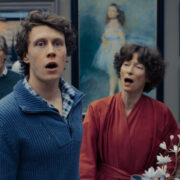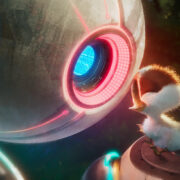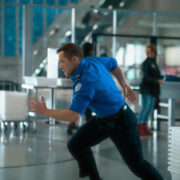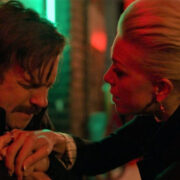THE TEST & THE ART OF THINKING: What Does The SAT Really Test?
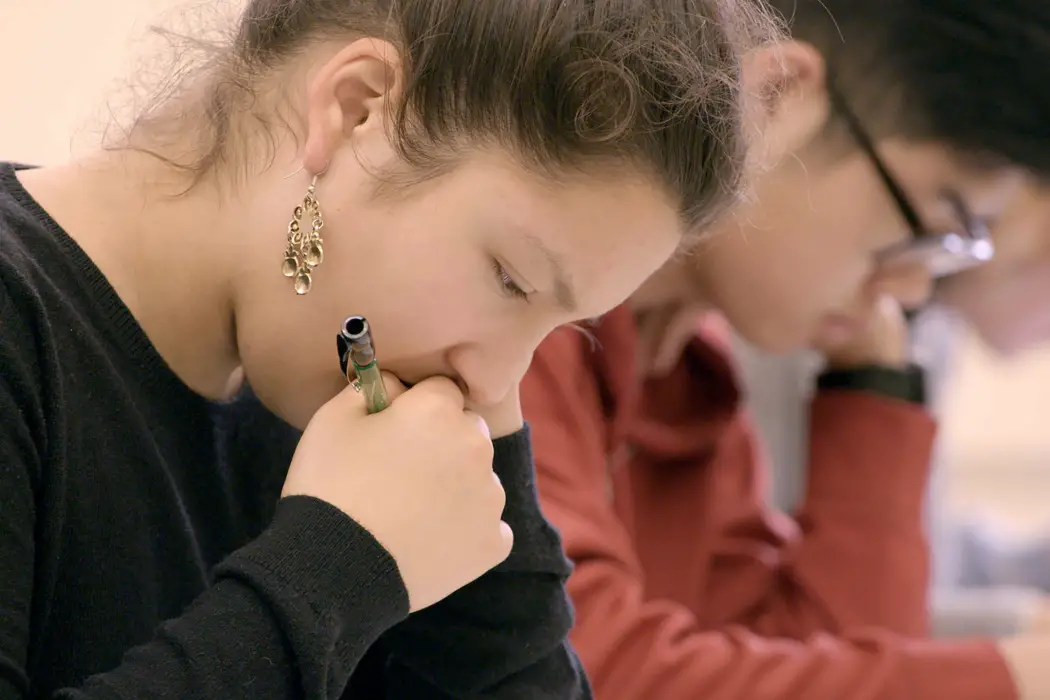
I am a husband, father, and teacher in the upstate…
One of my favorite narrative arcs in kung fu films is the process of training: the process by which a young person is transformed both spiritually and physically into a master of martial arts and philosophy. The 36th Chamber of Shaolin is a masterpiece in creating the narrative of the transformation. The young hero in the film must journey through 35 chambers of the Shaolin Temple before he is considered a master. Many of the obstacles seem mundane, difficult, and repetitive, but after six years, Yude becomes a master of kung fu in his own right, which is evident by his creation of a 36th chamber and the three-section staff.
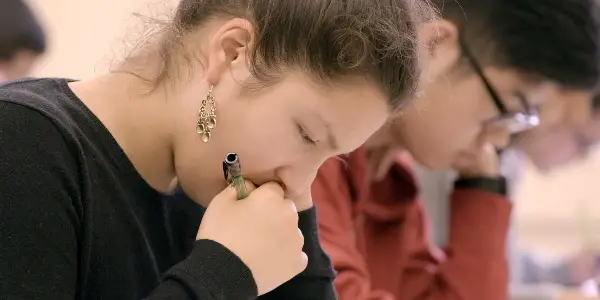
The process of becoming educated is also supposed to be a journey that transforms the individual. The process of schooling, like the thirty-five chambers of the Shaolin Temple, can often be mundane, boring, and tedious. Ideally, as students progress through each grade, they will show some form of mastery of content, which will allow them to move to the next level until all of their training culminates in a diploma that signifies that they have a certain level of knowledge and skills. Unfortunately, each obstacle on the path to completing one’s formal education does not necessarily teach a skill or prove one’s mastery in our current system. In the documentary The Test & the Art of Thinking, Michael Arlen Davis examines the history of the SAT and reveals that this obstacle to a prestigious college and scholarships may not measure a student’s mastery of content or even the student’s intelligence. In fact, the only skill the test may measure is one’s ability to game the test.
Measuring Intelligence and Creating Opportunity
The Test & the Art of Thinking examines the history of the SAT from its creation in 1924 as an IQ test that was used by Ivy League schools to test students’ intellectual and academic promise to its present use as a broadly used tool to assess readiness for college. The test was sold as a democratic test that would allow Harvard and other Ivy League schools to draw on talent from around the country rather than just from prominent northeastern preparatory schools. As universities became more accessible to more people, the test began to be used for other purposes. When the G.I. Bill led to an increase in enrollment, the University of California, Berkley, decided to use the test to weed out candidates that they imagined to be subpar. Other universities followed, and now universities and colleges are ranked according to the score range of the students that they admit.
The film shows how our desire to measure and rank through standardized testing has become a vicious circle and that these tests, particularly the SAT, are not even measuring what the tests claim to measure. Despite studies that have shown that there is no correlation between test scores and college performance, the SAT is still a major factor in most universities’ admission requirements and it is also a key factor in the allocation of scholarships.
It’s a Get the Answer Test
The most stunning segment of the documentary is not on the inefficacies of the test itself but on the industry of test preparation books and professionals that have grown up around the SAT. Several scenes in the film show test preparation tutors sitting around a table and laughing about the incongruity of what people think the test is and what the test means and the reality of the test. One professional plainly states, “It’s not a math test. It’s not a reading test. It’s a get the answer test.” Another tutor compounds the sentiment by adding, “I don’t care about your scope of knowledge. I care that you know enough to select the correct answer in the easiest and quickest way possible.” The scenes of the tutors discussing the test and tutoring students show that success on the SAT is more about knowing how to game the test than mastering a curriculum.

In one scene, a tutor shows a math problem and tells the student to not worry about the actual question. He covers the question and tells the student to look for a pattern of three out of the possible answers. The student quickly eliminates answers until he arrives at the correct answer without reading the question. At the same time, the viewer discovers that the test preparation industry is a 1.1 billion dollar industry. As they sit around and laugh about the test and people’s general misunderstanding of the test, these same professionals and those who own these companies are also laughing their way to the bank.
Race, Gender, and Class
The documentary illuminates the discrepancies between what the Collegeboard argues about the SAT and what the test actually does, but it does not fully illuminate other destructive effects of the test. For example, the film hints at the economic inequality between the preparation that is given to students from middle to upper-class families compared to working-class and impoverished families, but it does not dive into the test’s history of bias or the history of the test as a tool for discrimination. Nor does the documentary fully address how the tutoring industry is mainly in service of those who can afford it. For example, one test prep professional in the documentary mentioned that he had a parent spend a million dollars on training a student to take the SAT.

The documentary demonstrates that a test that was supposed to democratize access to prestigious higher learning institutions historically and currently is not living up to its claims. The test has become another obstacle through which the wealthy overcome while the rest are left behind with the illusion of opportunity. It is the inequalities created by the test that I wish the documentarians would have emphasized more.
Looking to the Future
The Test & the Art of Thinking is an important documentary because it highlights a particular issue in education that is connected to a larger problem. In the public system, education and school have simply become a pragmatic tool to create people who can enter into the modern economy and produce capital. Politicians want a system that runs like a business where input and output can be measured and monetized. The people at the top are no longer asking what type of citizen do we want to create through education; they are more concerned about measuring skills that they see as possibly being profitable. Yet, the tools that they have created do not necessarily measure what they are supposed to measure, and students are being left behind and the process of education is becoming as inhuman as a faceless corporation.
The documentary concludes with the fear that ESSA (Every Student Succeeds Act) will lead to classes being altered so that teachers teach to the test. I’m sad to report as a person who has been both a student and a teacher under NCLB (No Child Left Behind) and a teacher under ESSA that schools have been attempting to teach to the test for a long time. As long as a school’s effectiveness is being evaluated according to arbitrary means like the SAT scores of the students that attend, schools will teach to the tests, students will suffer, and we will continue to wonder what is wrong with our system. Until we educate the whole human, we will continue to produce fractured individuals who have learned nothing more than how to answer the questions on a test correctly, so that they can move to the next bureaucratic hurdle that they need to jump across.
Have you seen The Test & the Art of Thinking? What did you think? Let us know in the comments below!
The Test & the Art of Thinking is currently available to rent on AppleTV and Amazon.
Watch The Test & the Art of Thinking
Does content like this matter to you?
Become a Member and support film journalism. Unlock access to all of Film Inquiry`s great articles. Join a community of like-minded readers who are passionate about cinema - get access to our private members Network, give back to independent filmmakers, and more.


